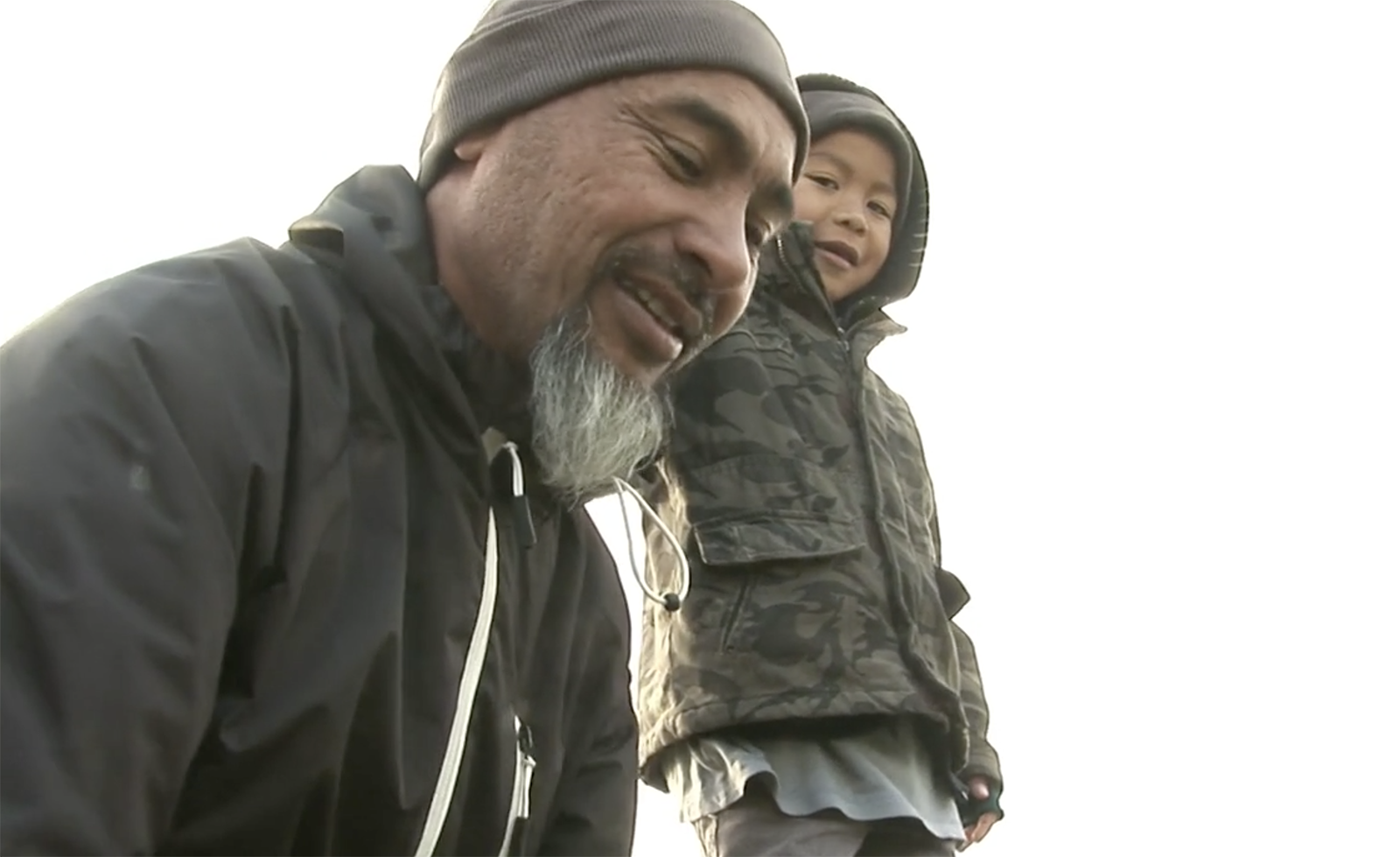https://vimeo.com/114637136
Passengers exiting the lunchtime train from town surge down the footbridge that straddles the railway lines at Khayelitsha Station and past James Chembe’s stall. When they reach the small market at the bottom of the concrete ramp, this jostling mass of people dissolves between stands of DVDs, plastic jewellery, sunglasses and cellphone accessories. One stand has pockets of citrus hanging from the structure’s metal frame like bulbs studded around a dressing room mirror. In the distance, there is an ancient caravan, white, with irregular blue hand-painted signage announcing “MONDI Restaurant”, with the outline of a teacup and some food piled on a plate. “Stomach,” says a woman from behind her table of goods. Piles of soggy offal, their pleated white folds as alien as sea coral, sit like partly deflated soccer balls along the front of her table, next to the pinkly moist lobes of lung and unrecognisable tubes of something the colour of fat. James’s stall, a collapsible temporary store-front, sits nearby on upended crates piled with bushels of crispy rapeseed, covo and broccoli leaves bound together at the stem with purple twine. “Five rand each,” he says, through an easy, snaggletoothed grin.
Malawian by birth, James, who looks as though he is in his mid-50s, moved to Cape Town after living in Zimbabwe for years. South, south, that’s the way everyone goes. But once he has put his last child through school, he’ll head back home, he says. Although trained as a carpenter and bricklayer, it is much more lucrative to run a stall here at the station. And these fresh leaves, well, they give him the edge, because you can’t find them in the local supermarket. That’s why he’s been up since before sunrise, to travel out to the farmlands in Philippi, 10km back in the direction of town.
“Take the train from town through Site C, through Site B. The stop next is Khayelitsha Station,” he’d beamed earlier, describing where he’d be. “That’s where you’ll find me, at Khayelitsha station.”
Another pulse of homebound passengers beats past his stand. None of them stop to buy his fare, but he’s not worried. He’ll sell most of his stock by the end of the day. Rush hour is still coming.
Kieyaam Ryklief stands on the edge of a field of frilly rapeseed plants that seem to have gone into hibernation. Rows of scalloped greenery run away from his feet, parallel green between alternating strips of sandy soil, like the cuff on a jumper: knit one, purl one, knit one, purl one. The damp earth is as fine as beach sand, and easily takes on the tread of anything that wanders through here: deep trenches cut by the arrowed profile of a tractor tyre, lighter workers’ boot prints, a whisper of the calloused under-claws of some unknown bird. He points to a shallow hillock about a kilometre to the south, fuzzy with the crowns of Port Jackson trees, the Australian wattle that the first settlers used to bind down the shape shifting dunes that frustrated their first efforts to farm here.
“This whole area used to be like that, just sand dunes,” says the 46-year-old urban farmer. He is hunched over in his windbreaker, a shade of federal blue, a shield against the winter chill.
Over time, farmers have levelled these dunes out into what today is the Philippi Horticultural Area (PHA), a patchwork of small farms that have been whittled down to the remaining 1500ha as urban sprawl has slowly gnawed away at the edges of this barely arable land. The PHA has been in the news lately because of plans to rezone the farmlands for housing development. So far, some fiery activism has stalled the process, but an aerial view of Philippi shows how contested this island of vegetable gardening is, in a place where the City of Cape Town says it has a housing backlog of 300 000 units, and, according to the Council for Scientific and Industrial Research a population that’s growing at 3.2% (compared with national average of 1.3%), 40% of which is driven by people moving into the city.
On every side, the congested settlements of the Cape Flats push harder and harder up against its green edge.
This area has been the city’s vegetable garden since the late 1800s. Exactly how much fresh food it supplies Cape Town is hard to calculate, but according to a report by the African Food Security Urban Network (AFSUN) at the University of Cape Town (UCT), up to half of the city’s cauliflower, carrots and lettuce come from here. While most of the PHA’s produce goes directly to retailers (83%), a good chunk of the second-grade veggies trickle down through to the township traders, with third-grade stock given to farm labourers—the latter is a significant contributor to the availability of healthy food to the poorest communities in the Cape Flats.
But Kieyaam is battling with his crop. He’s got a good chunk of his 2.5ha of farmland in Philippi under rapeseed and the damn things aren’t growing. The weather’s been unbearably cold, and the plants can’t seem to find the energy to send out more leaves. Harvest was supposed to happen in mid-June, but it got delayed by a week, ten days, a fortnight. By the end of June, he still can’t bring in any leaves, and he’s getting fidgety. Things were easier in the furniture restoration business, he says, where he spent ten years working from a shop in Wynberg, before getting into farming in his late 30s.
Read more...


